All photographs by Paul G Ryan
The nights were long and the nights were cold in Petaluma and San Rafael in 1972
It was my first job as a photographer on a feature film.
I had the good fortune to meet Beverly Walker who was publicist on the film. She knew of my documentary photo work and assumed I could handle the possibly frantic pace.
When people see a film that is full of enjoyment, they often say, “Well… that must have been a lot of fun to work on.”
That was not always so on American Graffiti. But it was most interesting.
George Lucas told me he wanted to make this film like a documentary, shooting all nights. Moving very fast, mostly with available light. And that I should be prepared to just shoot the action as it happens. There would be no time to set up for stills.
Every shoot “day” would be from dusk to dawn.
This produced a remarkable process of improvisation. Cinematographers hung on the side of cars, sometimes driven by the actors, sometimes towed, sometimes pushed by hand.for a close up. There was no video assist, few car mounts, that would have taken much too long for Lucas.
These are some of the photographs I made on those nights:
Shooting on a set was new to me. I neglected to have a “silent” camera for shooting during dialogue takes. I relied on my Leica being quiet enough. It was.
Many things were harbingers of the future on American Cinema. The spontaneous style, the technical freedom, minimal lighting. And the cast most of whom went on to become major stars: Harrison Ford, Ron Howard, Cindy Williams, Richard Dreyfus, Candy Clark.
Fred Roos was the unsung hero, having been instrumental in bringing in much of the cast. Francis Coppola was Godfather to the film.
There were consequences of the low budget. ( $750,000 ) In the long cold nights, all the local restaurants were closed and there was no place for most of us to keep out of the cold between takes.
Lucas had the film in his head like a computer program. He knew exactly the imagery he wanted and he knew the length of each take and exactly when to cut. Like Orson Welles or Alfred Hitchcock.
In San Rafael the stores were paid to keep lights on all night. But there was no traffic to divert or control.
There is a scene where Terry the Toad, (Charles Martin Smith) attempts to buy liquor and is interrupted by a hold up. The gunman as cast was the sole African American in the film. In a bold political statement, Art Rochester, the film’s sound mixer, refused to work on that scene, citing the racist type casting. Lucas respected that and recast the role.
I had recently gotten my pilots license. Lucas needed Richard Dreyfus’ point of view of the White Thunderbird from the air as he was flying off. Haskell Wexler knew that I had a Cessna and asked if I could fly him for the closing shot. I’m not sure he know I had only recently gotten my license We took the door off my plane. Haskell hand held the shot. It worked.
For me, despite the array of film celebrities, I was most fascinated to see Wolfman Jack in reality. Wolfman Jack a nighttime radio legend, who kept me company on many cross country road trips, a disembodied voice whose incarnation everyone’s fantasy imagined for themselves.



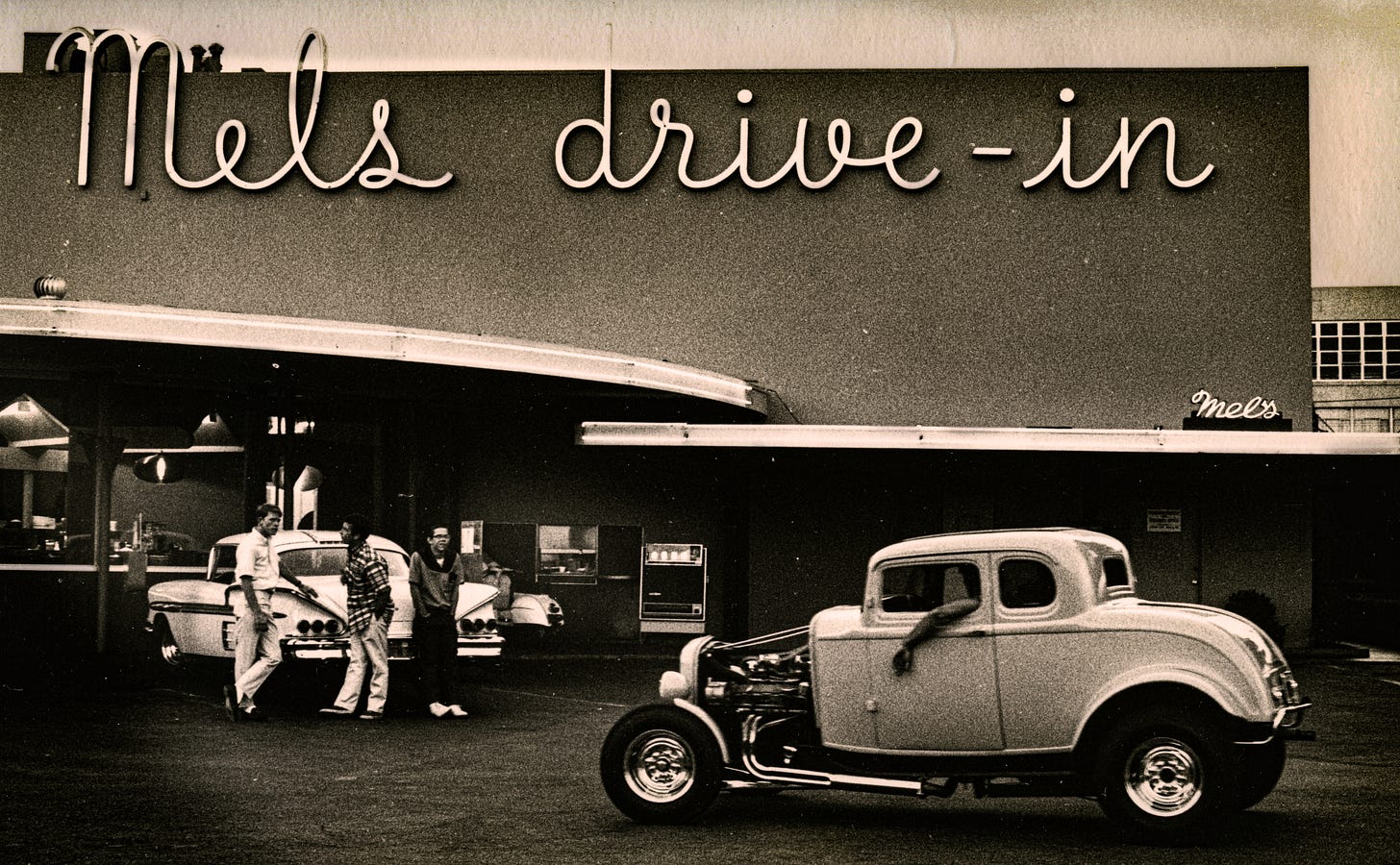
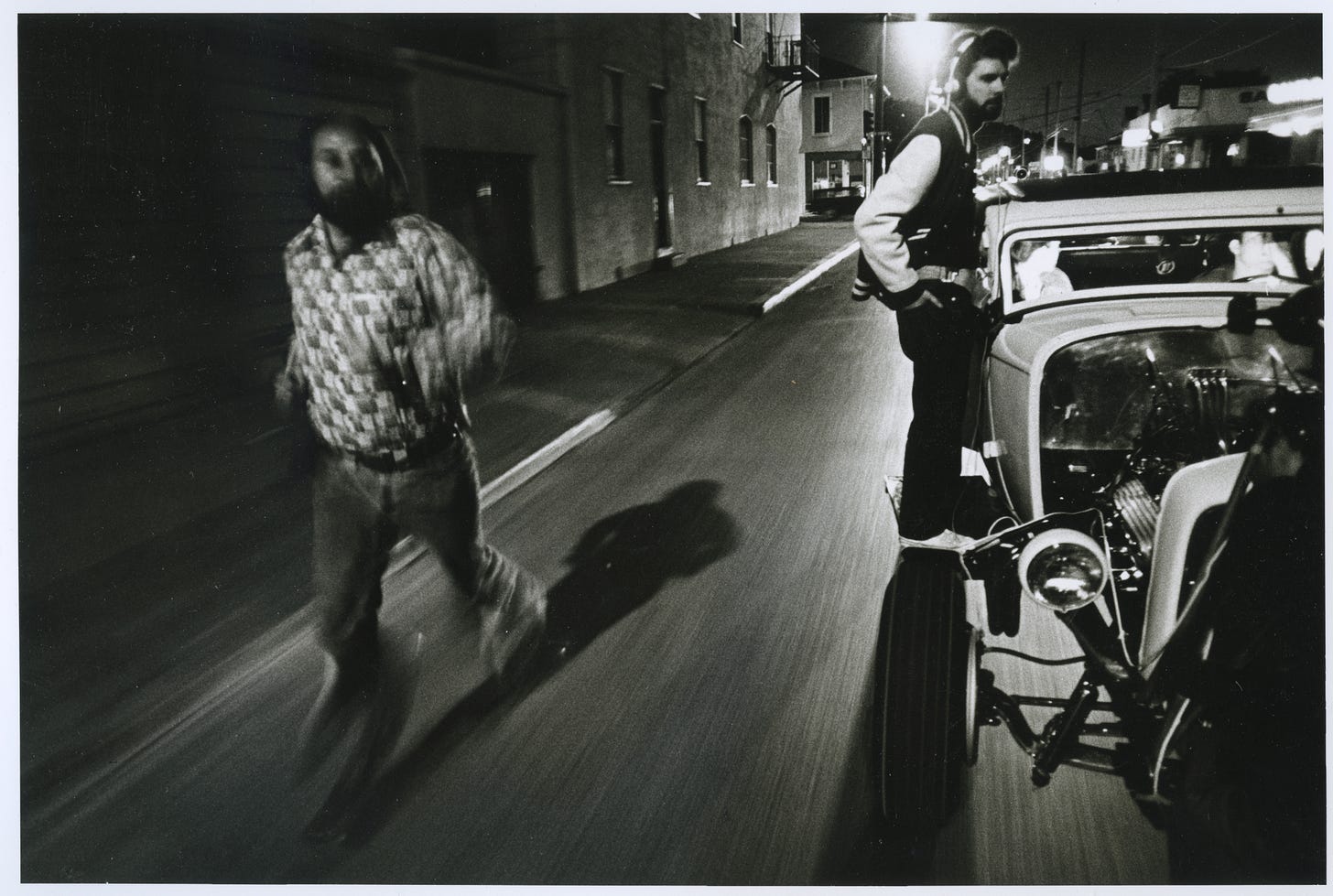





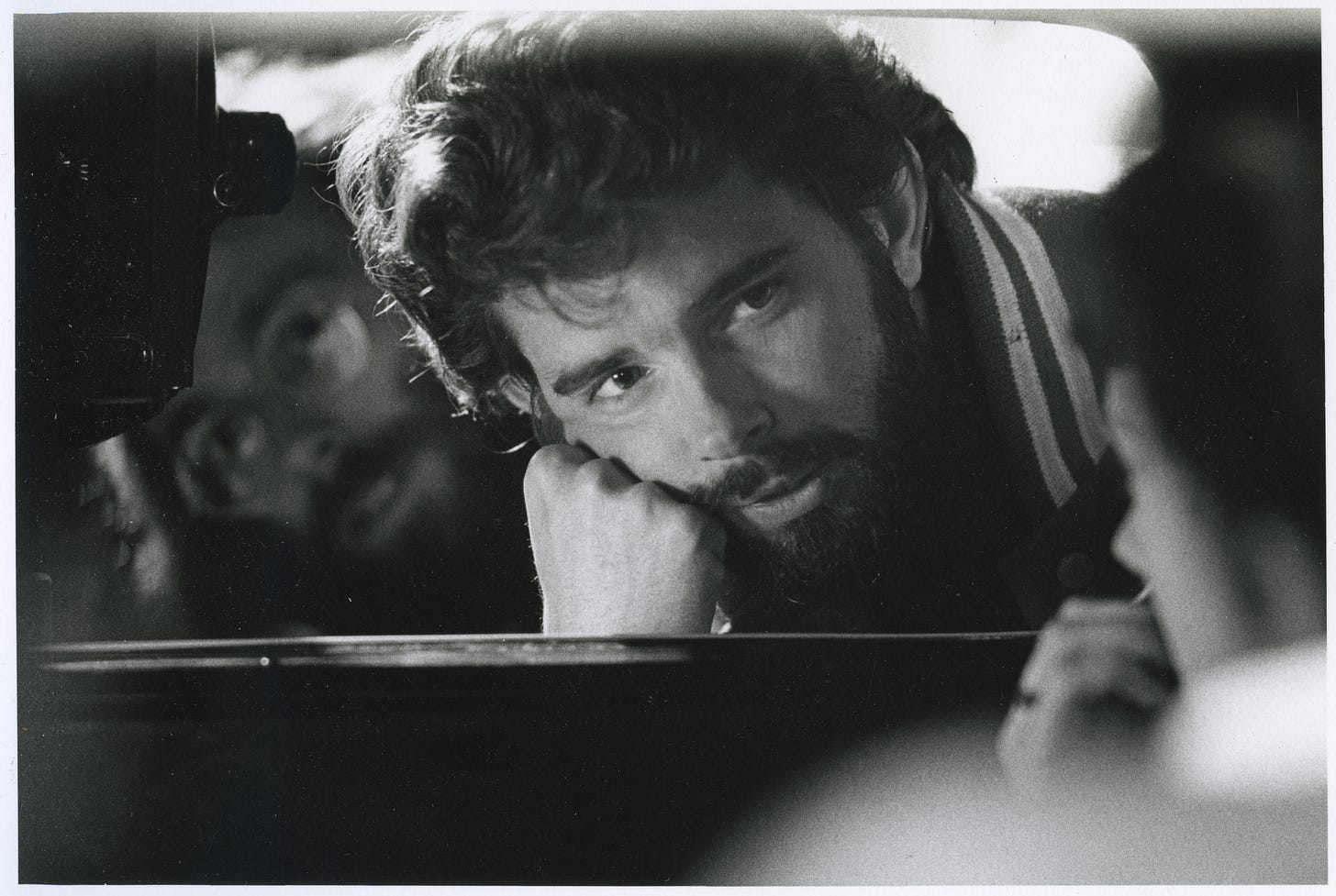


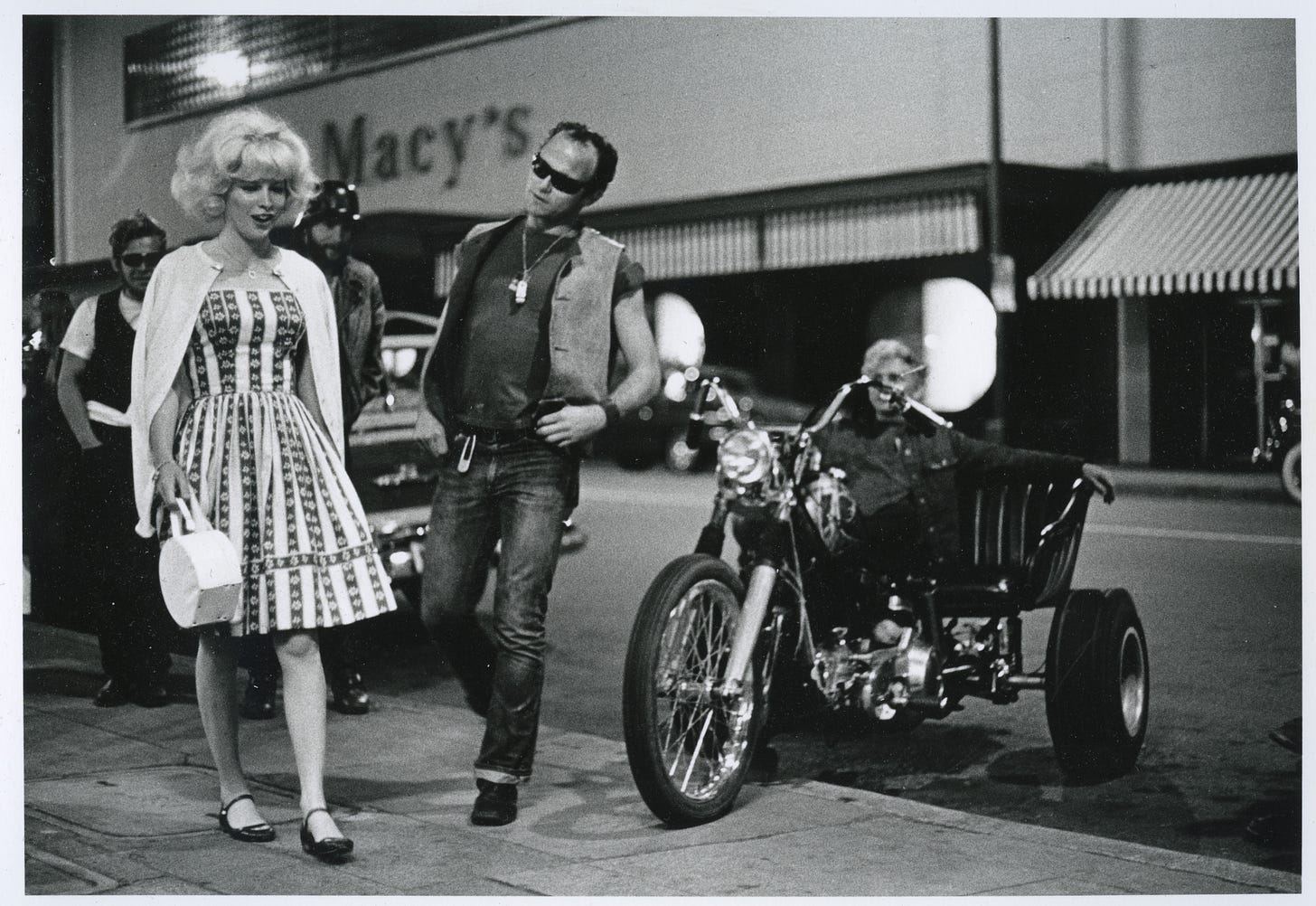

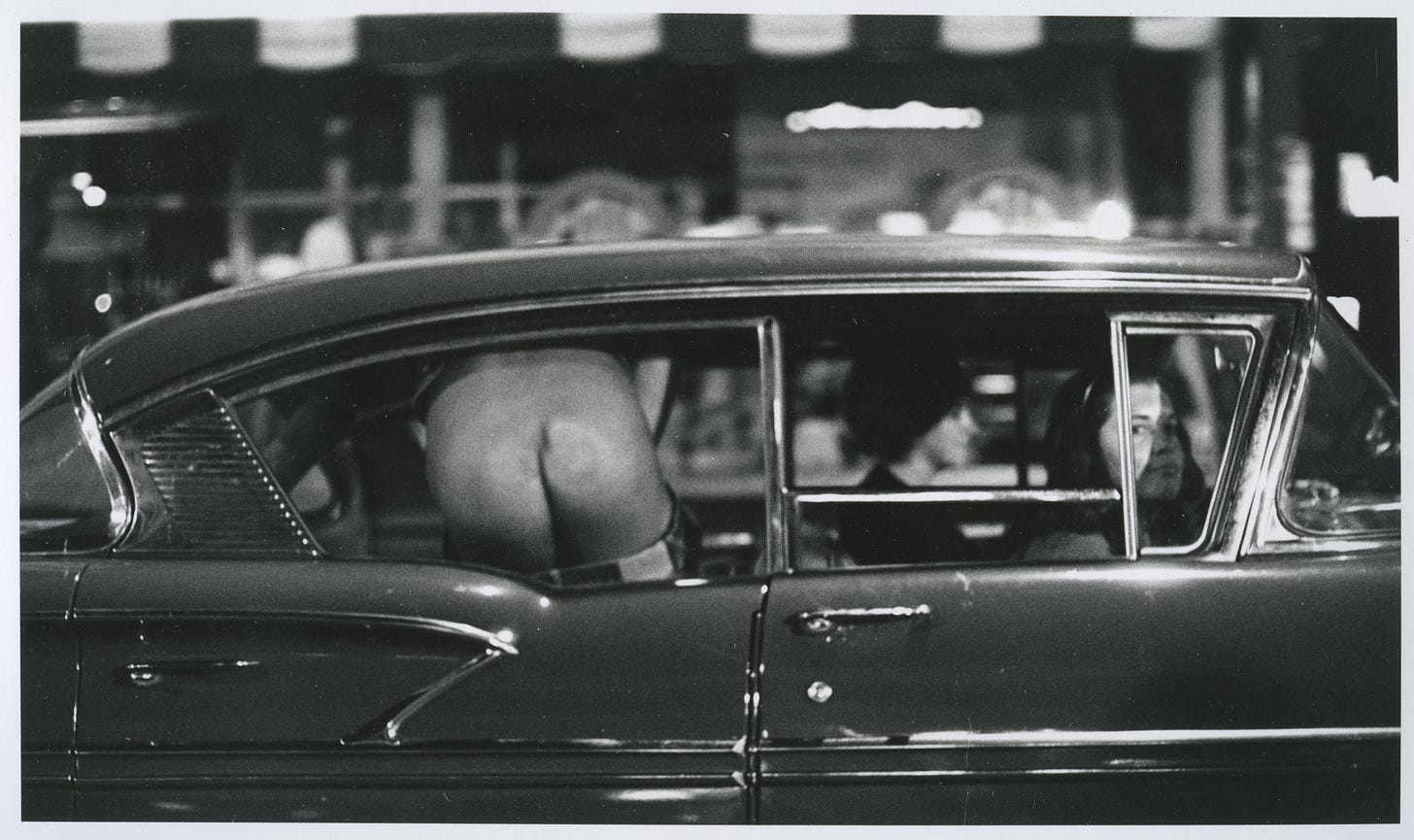


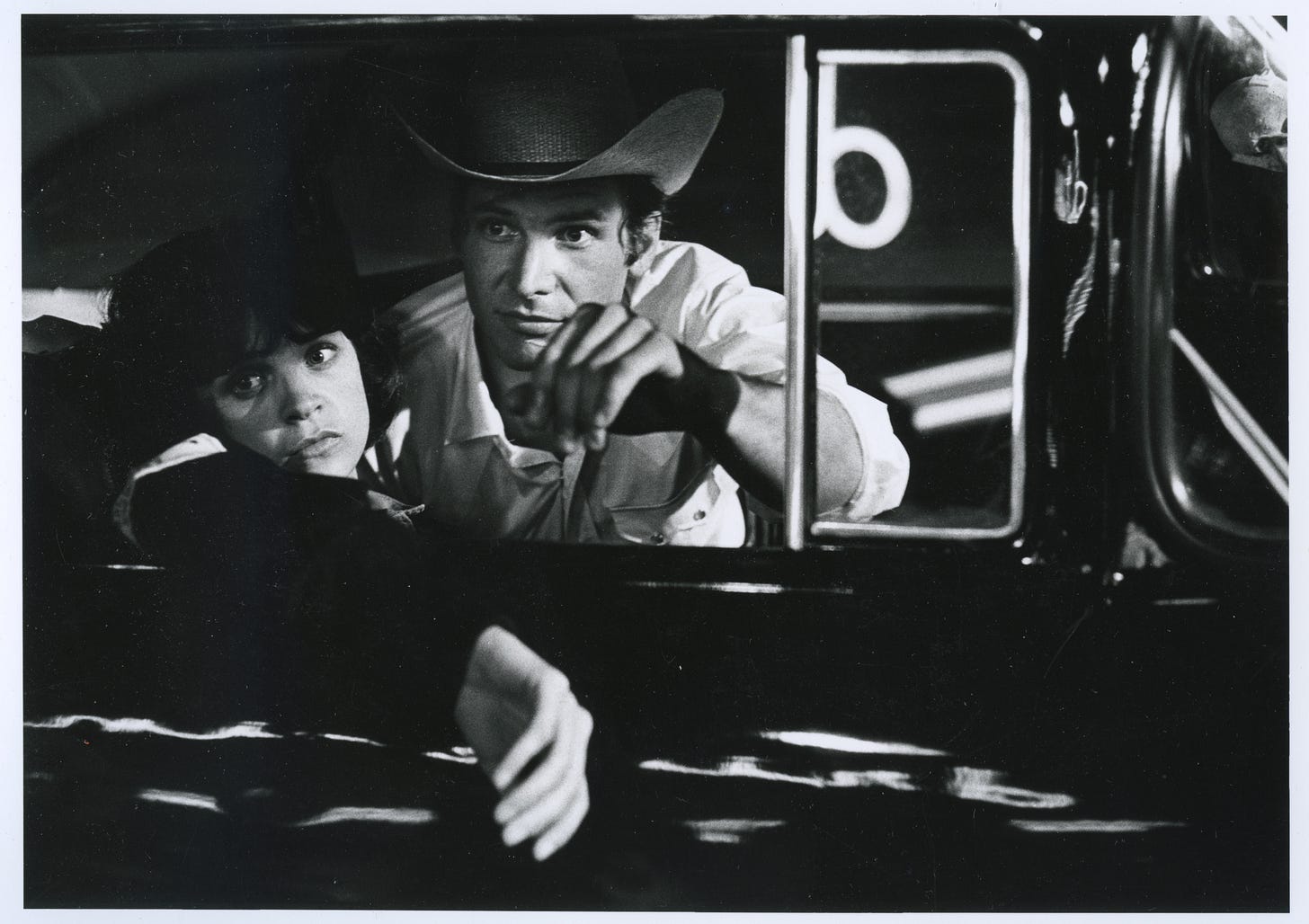




Hey you all out there, this is Wolf Man Jack, comin to you from XERB, broadcasting 50,000 watts across the border from Del Rio, Texas.
Great story, Paul. I love hearing more about your life.